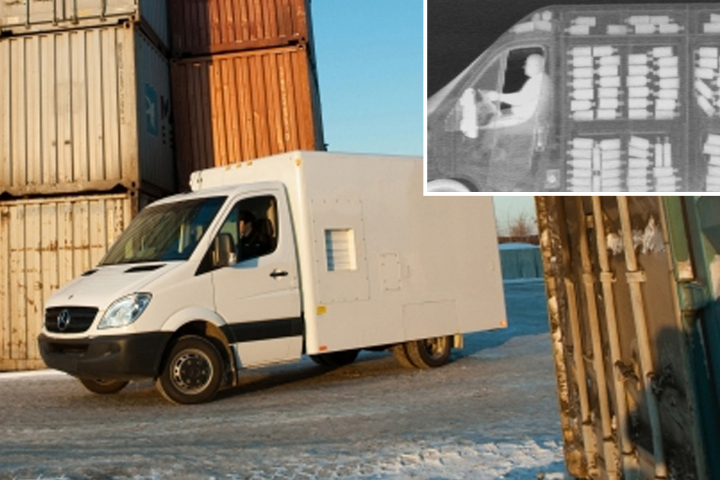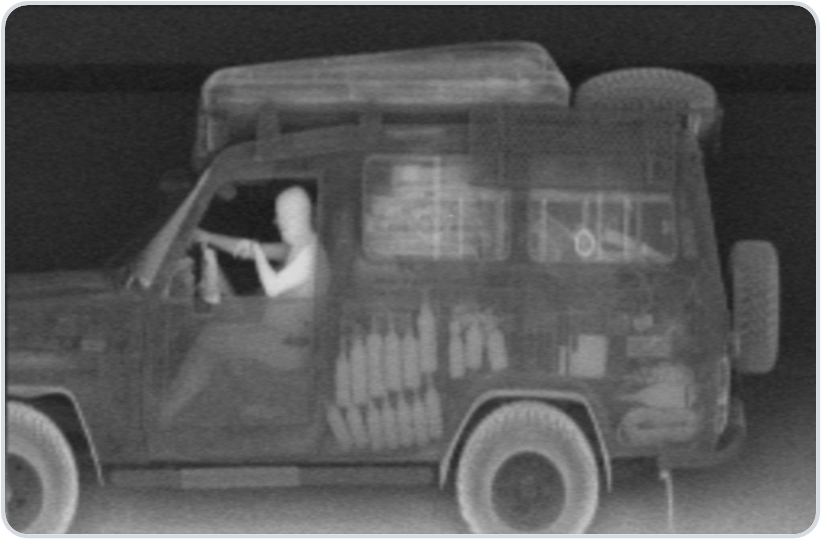New York police use mobile X-ray scanners without the knowledge and consent of citizens

ZBV Scanner
According to the New York Post , the New York police have adopted an unidentified number of vehicles equipped with mobile x-ray backscatter scanners. Such scanners can "look" inside cars, houses, and under the clothes of passersby. The fact that the police used such scanners surfaced in connection with a lawsuit filed by a human rights organization.
A scanner on wheels called Z Backscatter Van (ZBV), which looks like a regular van, takes 15 seconds to enlighten any vehicle. The equipment for scanning can even be controlled remotely, from a distance of up to 500 meters. The cost of such a mobile scanner is about $ 800 thousand .
')

Other van option
Unlike classical X-ray scanners, an X-ray scanner based on backscatter does not require placing an object inside the device. Reflected from the object being investigated, the rays are captured and converted into an image. At the same time, such a scanner can display organic fabrics and other non-metallic materials, such as explosives, plastic weapons, etc.
Such scanners gradually appear at airports. It is alleged that the dose of radiation received in them is extremely small. According to one of the studies , radiation exposure received as a result of scanning at an airport will not amount to 1% of the additional radiation dose received during flight in the upper atmosphere.
The existence of such ZBV scanners in various state-run press became known in 2010 , and by that time they had already been used for several years by state security, the military, and some police units. One of the highest customs officials, Patrick Simmons [Patrick Simmons], argued that thanks to mobile scanners from 2008 to 2010, more than a thousand confiscations were carried out, which resulted in the discovery and seizure of almost 45 tons of drugs, currencies worth $ 4 million and a dozen illegal migrants .

Sample scanner image
In addition, state officials claim that the images of people received by ZBV are only silhouettes - you can find a hidden illegal migrant by them, but you cannot identify a person, his race and age.
But against such scanners are fighters for human rights. In fact, a person without clothes is visible on the resulting image, so there is a constant debate about the permissibility of viewing the obtained images by persons exercising security control. Some critics argue that such a technique can be compared with a search without a warrant.
And the mobile scanner, which looks not only under the clothes of passers-by, but also into cars, and even into light buildings (plywood-gypsum-board houses, which are popular in America), caused a wave of criticism. “A van that rides down the street and looks in on people’s clothes and in their homes?” In my opinion, this is a violation of privacy and we should not deal with such things, ”said Congressman Jason Chafetz [Jason Chaffetz].

Sample scanner image
The problem is that only by 2010, the manufacturer ZBV, American Science and Engineering (AS & E), has already sold about 500 such machines - and no one except the manufacturer has an accurate list of buyers. Judging by the press releases of the company, it sells such cars to other countries. They were bought by the Thai police, the customs of New Zealand and Bulgaria, and other foreign services.
And now it turns out that New York police use ZBV on an ongoing basis. At the same time, the higher ranks of the police refused to name the number of machines available to the guards, and the frequency of their use, as well as to give answers to other questions asked. Police Commissioner Bill Bratton [Bill Bratton] noted only: “The use of these devices falls under the provision of security and anti-terrorism activities. They are not used to search for weapons in humans. "
Journalist Michael Grabell, on behalf of the human rights organization Pro Publica, has been seeking answers from the city administration in court for questions on the use of ZBV for three years now. In connection with the possible invasion of citizens' privacy and harm to health, the organization believes that the public should know all the details of using such equipment and decide in general how the police should ensure their safety.
The indignation of human rights defenders is caused both by the fact of using such equipment, and by the fact that law enforcement agencies are trying to keep it secret as much as possible. Human rights activists believe that the use of equipment that could violate privacy and harm health should be strictly regulated.
Source: https://habr.com/ru/post/366749/
All Articles